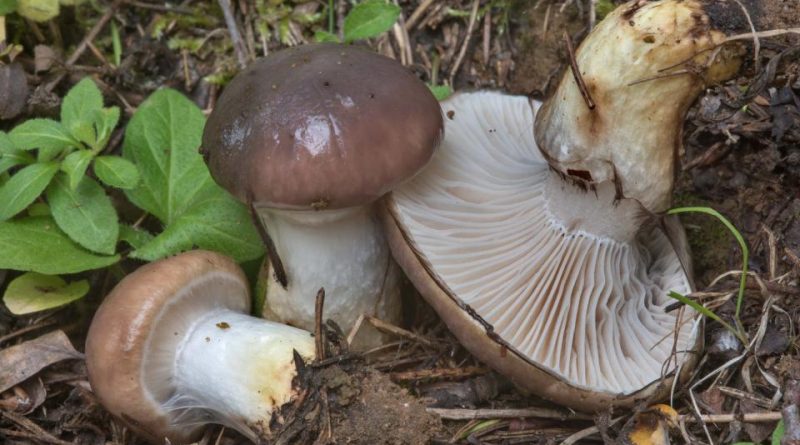Gomphidius glutinosus
Gomphidius glutinosus
The Chiodetto (Gomphidius glutinosus (Schaeff.) Fr.) is a mycorrhizal fungus belonging to the Gomphidiaceae family.
Systematics –
From the systematic point of view it belongs to the Eukaryota Domain, Kingdom Fungi, Basidiomycota Division, Subphylum Agaricomycotina, Class Agaricomycetes, Sottoclasse Agaricomycetidae, Order Boletales, Family Gomphidiaceae and then to the Genus Gomphidius and to the Specie G. glutinosus.
Etymology –
The term Gomphidius comes from the Greek γόμφος gómphos nail, ankle, long vine to join the parts of a ship and the Greek diminutive suffix -ιδιον -idion: therefore similar to a nail. The specific epithet glutinosus derives from glúten gluten, glue: ie glutinous, viscous.
Geographic Distribution and Habitat –
Gomphidius glutinosus is a common mycorrhizal fungus both in Europe and in America and it grows, even in groups of few specimens, under conifers (Picea abies in Europe, Picea sitchensis in America) but also under deciduous trees. It is also found together with Suillus grevillei in the period from summer to autumn.
Recognition –
The Gomphidius glutinosus is recognized for the hat of 5-12 cm, initially convex, then flattened or even a little ‘depressed with the surface covered with a brownish-violet, gray-brownish cuticle, very viscous and easily separable from meat. The lamellae are deeply decorrent, spaced, gray, then blackish in the adult fungus. The stem measures 7-10 × 1.5-3 cm, with white color and yellow base, bearing traces of a ring formed by the adhesion of the gluten of the hat in the juvenile stages. The meat is white, lemon yellow in the lower part of the stem, rather spongy, devoid of odors or particular flavors.
Cultivation –
Il Chiodetto is not a cultivated mushroom.
Uses and Traditions –
The opinions on the edibility of the nail are divergent; some guides keep it in high regard; for others it is a rather precious mushroom and for this reason it is recommended to collect it when the specimens are young; for others it is considered with caution. However the Gomphidius glutinosus has a delicate flavor, suitable for cooking with other mushrooms and in soups and stews. In order to preserve it better, before being prepared, it is advisable to remove the burr and the skin of the cap as soon as possible after collection. Worms rarely attack this species.
Preparation Mode –
The viscid cuticle of the hat must be removed before cooking. It is ideal for stewing or mixed mushroom dishes. Great to be dried.
Guido Bissanti
Sources
– Wikipedia, the free encyclopedia.
– Cetto B., 2008. Real mushrooms, Saturnia, Trento.
– Pignatti S., 1982. Flora of Italy, Edagricole, Bologna.
– Conti F., Abbate G., Alessandrini A., Blasi C. (edited by), 2005. An annotated checklist of the Italian vascular flora, Palombi Editore.
Warning: Pharmaceutical applications and alimurgical uses are indicated for informational purposes only and do not in any way represent a medical prescription; there is therefore no liability for their use for curative, aesthetic or food purposes.


